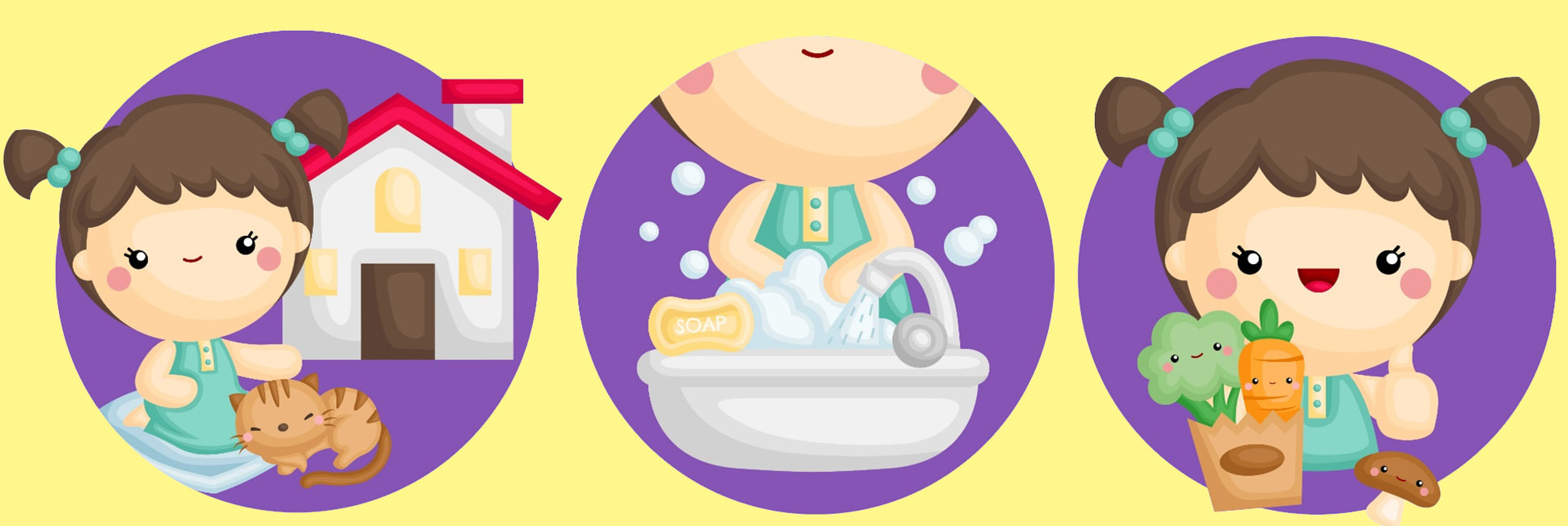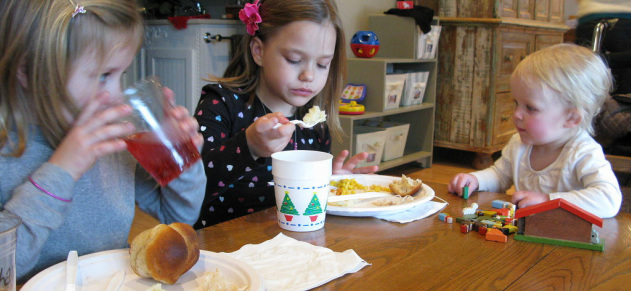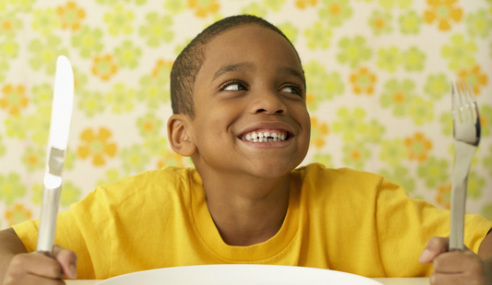Your body is an amazingly intricate and efficient machine, but it needs proper care to run well. If you want to be free of sickness and other physical problems, you have to do your part. That takes time, thought, and effort. You have to eat properly, drink plenty of fluids, get sufficient sleep, exercise, have your teeth and eyes checked periodically, limit your exposure to things that could be harmful, and so on.
Stories/Presentations
Videos
Coloring Pages/Activities
0 Comments
The first few months of your baby's life can be exhausting for both parent and child. Thankfully, most babies develop regular sleep patterns by the time they are 3 to 6 months old. In the meantime, try these tips for getting your little one to sleep through the night. Getting Immediate Relief
Transitioning to Sleeping through the Night
Establishing a Successful Routine
Text adapted from Wikihow.
Web Reprint, adapted Raising a happy, healthy child is one of the most challenging jobs a parent can have—and one of the most rewarding. Fortunately, parenting is one of the most researched areas in the field of social science. No matter what our parenting style or what our parenting questions or concerns may be, from helping our children avoid becoming part of the child obesity epidemic to dealing with behavior problems, experts can help. One challenge most parents face at one time or another is the dinnertime battle. Here are a few thoughts from well-known nutrition experts on how to get kids to go from being picky eaters to people with sound, varied diets. • Avoid a mealtime power struggle. One of the surest ways to win the battle but lose the war is to engage in a power struggle with your child over food, says Jody Johnston Pawel, LSW, CFLE, author of The Parent’s Toolshop. With power struggles, you’re saying, “Do it because I’m the parent,” and that’s a rationale that won’t work for long, she says. But if your child understands the why behind the rules, those values can lay the groundwork for a lifetime of sound food choices. • Let kids participate. Get a stepstool and ask your kids to lend a hand with easy tasks in the kitchen, says Sal Severe, PhD, author of How to Behave So Your Children Will, Too. “If they participate in helping to make the meal, they are more likely to want to try it,” he says. Older children and teens can begin to prepare special meals or dishes by themselves. Get teens started learning to prepare healthy foods before it’s time to live on their own. • Don’t label. More often than not, kids under 5 are selective eaters. “Being selective is actually normal,” says Elizabeth Ward, MS, RD. She prefers the term “limited eater” to the more negative term “picky.” • Build on the positives. Just as children can get comfort from reading the same story over and over, they enjoy having a set of “predictable” foods. “Even though they aren’t getting a wide variety of foods, they are actually doing OK nutritionally,” says Ward. When the child goes through a growth spurt and has a bigger appetite, use that opportunity to introduce new foods, she recommends. • Expose, expose, expose. Ward says a child needs to be exposed to a new food 10 to 15 times before he or she will accept it. But many parents give up long before that. So, even if your child only plays with the strawberry on her plate, don’t give up. One day, she just may surprise you by taking a bite. But don’t go overboard, says Severe. Limit exposure to one or two new foods a week. • Don’t bribe. Avoid using sweets as a bribe to get kids to eat something else, says Pawel. That can send the message that doing the right thing should involve an external reward as well as reinforces the pattern that eating unhealthy foods is a good way to reward yourself. The real reward of sound nutrition is a healthy body, not a chocolate cupcake. • Beware of over-snacking. Sometimes the problem isn’t that the child doesn’t like new foods but that they are already full, says Ward. “Kids can consume a lot of their calories as milk and juice.” Encourage the kids to drink water rather than juice when they’re thirsty. The same goes for snacks that provide little more than calories, such as chips, sweets, and sodas. “If you are going to offer snacks, make sure they are supplementing meals, not sabotaging them,” she says. • Establish limits. Having a set of bottom-line limits can help a parent provide some consistency, says Pawel. For example, parents may require that kids eat nutritious foods before snack food. Or that they must at least try a new food before rejecting it. “Consistency only works if what you are doing in the first place is reasonable,” she says. So, avoid overly controlling or overly permissive eating rules. If bottomline limits are healthy, effective, and balanced, they’ll pay off. • Examine your role model. Make sure you aren’t asking kids to “do as I say, not as I do,” says Pawel. If your own diet is based mainly on fat, sugar, and salt, you can hardly expect your child to embrace a dinner salad over French fries. • Defuse mealtimes. Don’t make your child’s eating habits part of the mealtime discussion, says Ward. Otherwise every meal becomes a stressful event, centered on what the child does and does not eat. Ward suggests that parents reserve talks about the importance of good eating for later, perhaps at bedtime or story time. • Give it time. “I find that children become much more open to trying new foods after the age of 5,” says Ward. “Most of the time, kids will simply grow out of limited eating.” Courtesy of Motivated magazine. Used with permission. Photo by Oakley Originals via Flickr.
From the bogeyman for small children to the bogies of SATs and final exams for the college-bound, stress affects kids of all ages. The first thing a parent can do to help their child manage stress is to build a strong family unit. Include your children in family discussions and be on the lookout for stress in your kids. Recognizing Stress in Children Especially small children with under-developed communication skills may display stress very differently than an adult does. Often kids’ stress is internalized and most noticeable in physical symptoms such as frequent flu-like symptoms including headache, stomachache, and even nausea. Children under stress may regress to behaviors like bedwetting, clinginess, and frequent crying. Behavioral symptoms may be extreme at both ends of a behavior spectrum. A normally active child becomes either listless or hyperactive, a usually docile child has fits of anger or a child that “acts out” becomes docile and introspective. Some signs of stress in kids are easily confused with children’s mental disorders. For instance, if schoolwork slides or your child’s circle of friends undergoes a drastic change, it isn’t a sure sign that your child is on drugs. Situations like these may simply indicate a child’s inability to handle a stressful situation. Helping Kids Reduce Stress Children primarily learn by example. The best way to teach your child how to manage stress is by using the tools and articles at Stress Management Tips to learn to effectively manage your stressors. In addition, you can develop skills and child-oriented stress management techniques to help your kids recognize and manage their stressors.
Text courtesy of Motivated magazine. Photo by Lotus Carroll via Flickr.
Adapted from an article by Mari Ferrell
Do our children today have entire days to explore nature and enjoy the freedoms of the outdoors? Is unstructured outdoor play becoming a relic of the past? Have you ever noticed the difference in your children's behavior when they are outdoors rather than cooped up inside? My childhood memories are filled with games of hide-and-seek, flashlight tag, making firefly lamps, building clubhouses, exploring the "woods" (vacant lot) near our house, and making things from the "clay" we found in the backyard. My mother and her brother tell stories of leaving their house every morning in the summer and not returning home until dusk. Their days included craw fishing in a nearby ditch, wading in Dry Creek, and building hideouts in the tall prairie grasses. Do our children today have entire days to explore nature and enjoy the freedoms of the outdoors? Is unstructured outdoor play becoming a relic of the past? Evidence is mounting that points to the fact that children are spending more and more time indoors, disconnected from nature due to the pull of the TV, internet, or video games. Outdoor play has a calming effect In my own children I notice a marked difference in their personalities when they are able to enjoy the pleasures of outdoor play. I have always believed that children should spend as much time outside as possible, hearkening back to my teaching days when I was often the only teacher who took her students to the playground on cold and misty days. I never had a complaint about the kids' behavior inside as long as [I was sure] they had plenty of time outside. When things seemed to be getting crazy it was always a sign that they needed to get OUT! I have noticed that it works exactly the same with my own three kids. Studies have indicated that exposure to green space and nature has an especially calming affect on children with ADHD (Attention Deficit Hyperactivity Disorder). Even adults benefit from time in nature, which has been shown to help with relaxation, stress reduction, and mental restoration. Outdoor play is fun This past summer at my daughter's birthday sleepover I had 12 girls ranging from six to eleven years old spending the night. My husband just happened to be out of town. I was a little concerned about doing this all by myself, so one of my good friends stayed for a couple of hours to help me out. Then she got to leave her kids with me and go out for a nice, quiet dinner with her husband. I was on my own. It was (understandably) wild and crazy inside my house. Cake crumbs and ice cream drippings covered the floor. I knew the best thing for everyone involved would be for all 12 kids to go in the backyard so I could have a moment to clean up the sticky mess. (Editor's note: Of course, keeping a close eye on the children from a window, or having an adult supervising the kids outside would be safest.) For a full 15 minutes one or another of them kept knocking on the door. "When can we come in?" "I'm tired," "I'm bored out here," etc. They didn't seem too sure about the idea of being outside in the heat. Finally the kitchen was cleaned up and I was ready for the re-entry to occur. But wait—what was going on out there? I stealthily opened a shade and peeked outside. They had a frog and some paper birthday plates and bowls, sticks and leaves, and were building a frog mansion. The mansion became more and more elaborate over the next several hours and the frogs multiplied. There needed to be lots of rooms, you see. And a swimming pool complete with a diving board. … Around 10 p.m. I forced them to come in. The frog mansion project ended up being the most talked-about event of the party. Exposure to nature is crucial to human developmentThere is a growing amount of research that shows the importance of time spent in nature to human growth and development. Extensive evidence indicates that direct exposure to nature is essential for physical and emotional health. When children do not have the experience of being outside, they are missing out on an important part of childhood. In his book Last Child in the Woods: Saving Our Children from Nature-Deficit Disorder, Richard Louv explains, "Nature-deficit disorder describes the human costs of alienation from nature, among them: diminished use of the senses, attention difficulties, and higher rates of physical and emotional illnesses." We should not think of outdoor play as simply leisure time, but as something that is as necessary to our children's development as a balanced diet or a good night's sleep. Time in nature helps:
Exercise when young builds the body for life Studies are showing more and more that exercising seems to have a tremendous effect on human growth and development‚ most importantly when you are a little child, but also all the way up into your early 30s, and, of course, exercise is beneficial at any age. Some of the effects of exercise, such as bone growth, affect you for life, and can only be gotten when young. It's believed that children who get insufficient physical activity and exercise may not grow to their full physical potential. It's a fact that exercise promotes growth on top of the growth which is derived from sleep and nutrition. Exercise is directly linked to the size and strength of a person's bones. Children who get good exercise grow more and have stronger bones than those who have less or no exercise. Bones, like muscles, grow stronger with exercise. Bone growth stops around puberty or at 18–20 years; density and strength still increase until around 30–35 years. Exercise is the greatest stimulator of bone growth. Additionally, it's the bone strength gained during the first 35 or so years of life that either prevents or contributes to osteoporosis, and to overall strong or weak bones in later life. What can you do? Make an effort to increase time outdoors. Find ways to expose your children to nature and green spaces. [In the summer] this can be difficult to do in extreme heat, but sometimes just a hose and a few water balloons, a small kids pool or tub, buckets of water, and bubbles will suffice. A rock garden, vegetable garden, or animal habitat could be a wonderful addition to your backyard. Last summer we went for nature hikes and biked on the greenbelt in the cooler parts of the day, stopping to see interesting things along the way. Studies: A growing body of literature shows that the natural environment has profound effects on the well-being of adults, including better psychological well-being, superior cognitive functioning, fewer physical ailments and speedier recovery from illness. It is widely accepted that the environment is likely to have a more profound effect on children due to their greater plasticity or vulnerability (Wells 2003). Research is providing convincing evidence of the significant benefits of experiences in nature to children. Findings include:
Compiled from assorted sources
Promoting Good Food Habits H. Darlene Martin, nutrition specialist Children often take the attitudes and habits they form during their preschool years into adulthood. So the preschool years are an excellent time to teach children that a proper diet is part of a healthy lifestyle. By 15 months old, most children can feed themselves without help—if they are allowed to try. It may be faster and less messy to feed a toddler, but helping him is not in the child’s best developmental interest. Give him the chance to feed himself. When preschoolers are allowed to choose from a variety of nutritious foods, they will take in adequate nutrients over time. Children need protein in order to grow. Milk, fish, poultry, eggs, cheese, and dry beans and peas all supply protein. Children also need calcium for strong bones and teeth. Calcium is found primarily in milk and milk products, but it is also found to a lesser extent in green, leafy vegetables. Iron is an important mineral. It is supplied by such foods as meat, poultry, fish, and eggs; green, leafy vegetables; and whole-grain cereals. (If you serve iron-fortified boxed cereals, the iron is absorbed better when served with a food rich in vitamin C, like citrus fruits and their juices.) Dark green or yellow vegetables are also good sources of vitamin C and vitamin A. Small children need plenty of water for regulating their body functions. A higher percentage of children’s body weight is water, so offer water to your preschoolers several times during the day. Children also need a certain amount of fat in their diet. Fat helps to provide extra calories and needed nutrients for active and growing children. Don’t restrict fat intake for children under the age of two. For children over two years old, fat should represent about 30 percent of total caloric intake. Sugary foods provide few nutrients and should be eaten on a limited basis. If left on the teeth, chewy, sticky, sugary foods (even those using natural sweeteners) may promote tooth decay. Give children the opportunity to brush after they eat, and teach them to brush properly to help diminish tooth decay. Most preschoolers experience food jags. For a time, they may eat only a few self-selected foods. Finicky food habits are often temporary. They usually disappear if you don’t make unnecessary rules about eating or make food choices an emotional issue. Don’t make food the object of bribes or punishments. If a child rejects a food, don’t make a big issue of it. Your insistence may make the child more determined to refuse the food being offered. Offer the rejected food at a different time. Preschoolers, like adults, should be allowed to dislike certain foods. If you really want to promote good food habits, set an example for the children in your care. Children learn by example, so take time to sit down and eat with them. If they see you enjoying nutritious foods, they will be more likely to give them a try. Feeding Dos and Don’ts Jan Faull Here are some suggestions to help improve your child’s eating behavior:
Whatever you do, don’t engage in a power struggle. Remember that your child alone controls what she swallows. You control the food you put on the table, so you can gradually influence your child toward good eating habits. But if you engage in an emotional battle of wills over eating, you’ll lose-and the negative repercussions could last for years. Coping with a Picky Eater—Not So Great Expectations William G. Wilkoff 1. After their first year, children’s growth slows down considerably. An infant’s growth in the first year is explosive. At one year he will have nearly tripled his weight and grown almost a foot long. By his second birthday, he is growing only about one-tenth as rapidly as in his first year. As a new parent, you may come to expect this phenomenal growth rate to continue into the preschool period. It will not happen. (If it did, your child would have a serious medical problem!) 2. After the first year, your child needs relatively fewer calories. As your child gets older, her body becomes leaner; in simple terms she loses her “baby fat.” Her new body proportions require relatively less energy to function. For the preschool child this means that she needs only half as many calories per pound of body weight than she did as a baby. This is why the two- to five-year-old may appear to be eating less as she gets older. 3. Children “streak eat.” Young children develop an affection for certain foods that may remain favorites for weeks or months or years, and then inexplicably fall out of favor without warning. Children may eat very well for a few days and then just pick for a week. It is the unusual child who will eat a wide variety of foods in consistent quantities day in and day out. 4. Babies are born with a natural preference for sweet and a dislike for sour. All other preferences or tastes for things are learned. Breast milk is intended to be your child’s first food, and it is very sweet. By repeated exposure you can modify your child’s preferences for most foods. However, she may always prefer sweet things when given a choice. 5. Children are wary of new foods. Although toddlers are prone to pick up and put strange things into their mouths that they shouldn’t, they are resistant to trying new foods. It just isn’t in their nature. This does not mean that you shouldn’t offer them new things to try, but your expectations should be low. For a hard-core picky eater, I wouldn’t suggest offering something new more than once or twice a week; you’re not trying to look for trouble, just trying to make a point. Once you get mealtimes to be more pleasant for all concerned, you can become more adventuresome. Until then, help your child by allowing her to have more success at eating by avoiding too many strange things in too short a period of time. 6. Young children’s appetites seem to decline as the day goes on. This is very important for a parent to understand. Exactly why children eat less later in the day is unclear. It may simply be that they have already consumed the necessary calories and their appetite shuts down, or it may be that they are more tired than hungry. 7. Not everyone loves to eat. You may already know this but may have trouble applying it to your own child. Just as there is a wide variety of body shapes and sizes, there is a wide spectrum of appetites across the population of children (and adults). Some people love to eat and move it near the top of their priority list for the day. Others only eat to stay alive and seem to get little pleasure out of the process. Fortunately, most of us enjoy eating but keep it in perspective when it comes to the rest of our lives. There are children who were picky for the first six years of their life and then as if by magic suddenly become voracious eaters. Other children remain indifferent to eating for their entire lives. Healthy Snacks for Toddlers Canada‘s Food Guide to Healthy Eating and Toddlers Toddlers have high energy and nutrient needs relative to their small body size. Their small stomach capacity has no room for foods that do not offer a good source of nutrients and energy. Offering a variety of nutritious foods at meals and snacks ensures a healthy diet. During this time, toddlers also experience fluctuating appetites, which cause great concern for parents. Children will generally eat when they are hungry. Parents may think their child is not eating enough. Remember that toddlers eat smaller amounts than adults because of their smaller stomach size. This is why it is important to offer healthy snacks between meals. Often parents forget to count snacks when they consider how much their child is eating during the day. Planning nutritious snacks is as important as planning meals. They should contribute to the child’s overall daily nutrient intake and provide energy. Snacks need to be offered well in advance of the next meal so they do not spoil the child’s appetite. To promote both dental and nutritional health, snacks need to be low in sugar and nutrient dense. Nutritionally and dentally healthy snacks are: Grain products: whole wheat breads, crackers, rolls, toast, muffins and loaves made with limited amounts of sugar, unsweetened whole grain cereals, rice pudding Vegetables and fruit: lightly cooked vegetable and fruit pieces, grated raw vegetables or hard fruit, unsweetened frozen or canned vegetables and fruit, vegetable and fruit juices Milk products: plain whole milk, yogurt, cheese, milk puddings and yogurt or cottage cheese dips Meat and alternatives: hard-boiled egg, pieces of lean meat or poultry, tuna, salmon, peanut butter or other nut spreads, hummus or other spreads made from pureed legumes (dried beans, peas, lentils) Skin helps keep infection out of your body, so when it dries out and little cracks form, you’re literally more open to bacterial, viral or fungal infection. Here are some ways to prevent and speed—heal cold—weather skin problems. Wipe out dryness: The combination of colder outdoor temperatures and dry indoor heat makes dry skin (and the annoying itching it causes) almost inevitable. Preventative action:
Treatment tips:
Handle hangnails: If your child’s hands are dry, chances are he’ll have hangnails just begging to be chewed on or torn off. Preventative practices:
Treatment tips:
Beat chapped lips: Dry, flaky lips aren’t just annoying; in some cases, they can lead to cold sores. Preventative practices
Treatment tips:
Conquer cold sores: Once a kid has been exposed to the herpes virus, cold sores may recur. Preventative practices:
Treatment tips:
Courtesy of Redbook
By Kathryn Westcott, BBC News Magazine The self-consciousness of a pre-teen is something many parents are only too aware of and the dreaded question of "Am I too fat?" can leave many lost for words. Even a carefully phrased response can provoke prolonged silences or slammed doors. Fears that focusing attention on a child's size might make them overly self-conscious, cause them to obsess about their appearance, or even lead to an eating disorder may cause parents to shy away from the topic. There is no single strategy, but there are "common sense" ways to deal with such a touchy issue. First, you have to talk about it Some parents think that the less said the better but there is no barrier to talking about things with your child, says Andrew Hill, professor of medical psychology at the University of Leeds's institute of health sciences. "It's not easy," he says, "but if questions are raised, don't duck them. Be engaged. The key thing is the 'why'. I would want to know why this behaviour is suddenly occurring. Is it something the child has seen on TV, or has someone said something at school - maybe something subtle but hurtful. These concerns are often symptoms of other events - sort these out and the other behaviour will likely moderate itself." A child's weight concerns, he says, often fluctuate and can be temporary. Girls of a particular age - coming up to puberty - do compare themselves with others in the class, he says. The most rapid change for a girl's body is growth associated with puberty and there could be massive differences within a single class. Girls, on average, double the amount of body fat as they go through puberty. Boys' body composition changes, but in a different way: they tend to put on more muscle, he says. "When girls compare themselves, they are at different points of their physical development. Talking to them is a positive and reassuring way to deal with it. Let them know that in a few years' time, those physical differences would have reduced. The key is not to make them self-judgemental." Don't be alarmed A parent should not overreact if a child asks them whether they are fat, says Paul Gately, professor of exercise and obesity at Leeds Metropolitan University. "There are parents who are absolutely gobsmacked. It's the dreaded question that's come when they are not prepared. But their reaction might cause a child to think "what have I unleashed?" says Gately. Many parents, he says, will "stick their heads in the sand" or tell a child there isn't a problem. But, he says, if there is a problem, the child will get teased in school and end up mistrusting the parent. "The teasing and bullying of overweight children is endemic in our schools," he says. "If a child has mentioned it, the issue is not going to go away. Parents need to have an open-ended, conversations in which the children do the talking. The child needs to understand it from their perspective," he says. Be prepared With child obesity on the rise, parents who have concerns that their child might be overweight could prepare in advance for the conversation that will inevitably come, says Gately, who runs weight management services in partnerships with local authorities. "Parents will benefit because they won't be in a responsive situation," he says. Parents should modify their environment in advance to make it more healthy, so when the question comes up, they can say that the whole family has been living a healthier lifestyle, and this needs to be built on. Emphasise the entire family's eating and exercise habits and commit to change - but not dramatic ones, says Gately. Bringing up the weight issue Is it wrong to broach the issue if a child doesn't bring it up first? The difficulty, says Hill, is if a parent sees it as an issue and wants to raise it. "Judge it - if they don't want to talk about it, don't run the risk of it becoming a contentious issue. If concerns persist, talk to a teacher or [doctor]." Keep it casual A parent who feels the need to broach the subject could gently ask a child if they would feel more comfortable if they were in a healthier weight range, says psychologist and writer Amanda Hills. "If they say yes, then offer to help them by cooking more healthy food - but encourage their input as this puts them in control." The key is to guide and not try to control your child's eating habits, she says. "Many eating disorders involve the feeling of not being in control," says Hills. "Keep the issue of food casual. Treat it as if it's fuel for a car - don't say that some food is good or some is bad. If a parent does feel the need to point out that something is not the best choice, do it in a low-key way - don't obsess about it." The key is not letting food become a battleground. Deflect the issue "We are hearing of younger and younger children being conscious of their body image," says Mary George of charity Beat. "It's another bit of childhood that is disappearing." If a youngster brings it up, don't avoid it try but try to deflect it, says George. "Offer praise and encouragement in other areas - tell them they are kind, helpful, happy and generous - steer it away from body image." Don't make jokes Parents often don't realise that making a joke about a child's weight can affect them for life, says Hills. "A father, for example, should never call a daughter 'chubby'. A husband shouldn't say negative things about their wife's weight, and vice versa." Parents must be careful not to be critical of their own weight or that of others, says George. "Even really young children - four- or five-year-olds - will take this on board." Mum's not on a diet Research shows that a child is affected by their mother's self-image and the way she treats food, says psychologist and writer Amanda Hills. In the US, this has been referred to as "thinheritance". "It is absolutely crucial that mum should never say she is on a diet," says Andrew Hill, a body image and behavioural specialist. "All of the people I have dealt with for eating disorders had a mother - or a father - who demonstrated obsessive behaviour around food." If a mother feels like cutting down, do it in a low-key way, he suggests. "Say something like, 'Mummy's not going to have a big potato because she's finished growing.' But mum should never serve herself a separate meal." But Andrew Hill says depending on the situation, there might not be a problem with a parent being seen to be managing their weight. "If a parent is going to Weight Watchers, for example, why hide it - it usually means they are overweight and they are trying to manage it." The key is not to obsess about it, he says. Active learning If a child is concerned about their weight, parents need to create a situation in which children are "active learners", says Andrew Hill, in which they learn from their own mistakes. They need to build self-confidence and self-competence, and parents need to give them the opportunity to go out with their friends and exercise - rather than focusing on their weight, he says. Set the nutritional agenda Children consume about 60 to 70% of their food energy at home, so parents set the nutritional agenda, says Hill. "Older children have more and more liberty and financial power - the key is to get them through adolescence so that they are confident and can make choices about how they prioritise, because later on they will make choices based on their own perception." Article courtesy of http://www.bbc.co.uk/news/magazine-22795927
They Take Their Lead From You. Make Healthy Choices and Your Kids Will Too.
Help Them Try New Foods.
Picky Eating is Temporary.
Play Actively Every day.
Article courtesy of http://www.choosemyplate.gov/food-groups/downloads/Pointers4Preschoolers.pdf. For more tips, information and resources on helping children learn good health habits, visit http://www.choosemyplate.gov/print-materials-ordering.html Parenting magazine
Myth: Dairy products make a child’s cold worse. Reality: It’s just not true that dairy products increase mucus production or thicken nasal secretions. The cold virus itself causes mucus production in the nose and the back of the throat. Dairy products simply coat the lining of the back of the throat, making it feel funny. You can continue to offer your child milk or other dairy products when she’s sick with a cold. If she won’t drink milk, don’t worry. Simply give her other liquids—water, juice, or chicken soup—until she feels better. Even if she doesn’t have much of an appetite, it’s important that she gets plenty to drink to ward off dehydration and keep mucus flowing through her nasal passages. Myth: You must be vigilant when introducing foods into a child’s diet, because many kids have food allergies. Reality: Food allergies aren’t nearly as common as people believe. Almost one in three parents thinks her child has food allergies, but only 6-8% of kids really do. Food allergies occur when the immune system attacks the otherwise harmless food and causes a reaction such as hives, eczema, vomiting, diarrhea, etc. And though parents frequently blame such reactions on a long list of edibles, the reality is that milk, eggs, peanuts, tree nuts (such as cashews and walnuts), wheat, soy, fish, and shellfish account for 90% of food allergies. If you suspect that your child has an allergy, discuss the likely offender with your pediatrician. Myth: Milk is essential for strong bones. Reality: Milk is one of the best sources of calcium, but if your child won’t drink it, she can still get adequate amounts of the bone builder from other foods. These include yogurt, cheese, calcium-fortified soymilk, broccoli, tofu, dark, leafy greens, and calcium-fortified, 100% juice (such as orange). What matters most is that your child meets the recommended daily intake: 500 milligrams of calcium a day for kids ages one to three; 800 milligrams for four- to six-year-olds; and 1,300 milligrams for kids nine and older. Myth: When your child’s sick, it’s best to feed a cold and starve a fever. Reality: You should never withhold food from a child, doctors say. Your child needs all the nutrients and fluids he can get to fight an infection. But if he isn’t up to eating full meals, don’t worry. Sick kids should be allowed to eat what they feel like and listen to their bodies. It’s more important for them to drink plenty of liquid to prevent dehydration. They’ll make up calories pretty quickly once they’re feeling better. Myth: Juice is a healthy thirst quencher. Reality: Though 100% juice is definitely more nutritious than sugary drinks, it shouldn’t be the only drink your child reaches for when she’s thirsty. There have to be limits on a child’s juice intake. Otherwise, it will decrease her appetite for more nutritious foods and may displace milk as a beverage. What’s more, because of the high natural sugar content of juice, drinking an excessive amount can harm teeth or cause stomach upset in babies. Nutritionists recommend limiting a toddler’s juice consumption to about four to six ounces a day; older kids should try not to drink more than 12 ounces a day. Offer juice as a treat, not a thirst quencher. Water is a better choice when your child is thirsty. |
Categories
All
Archives
March 2024
LinksFree Children's Stories |











 RSS Feed
RSS Feed
